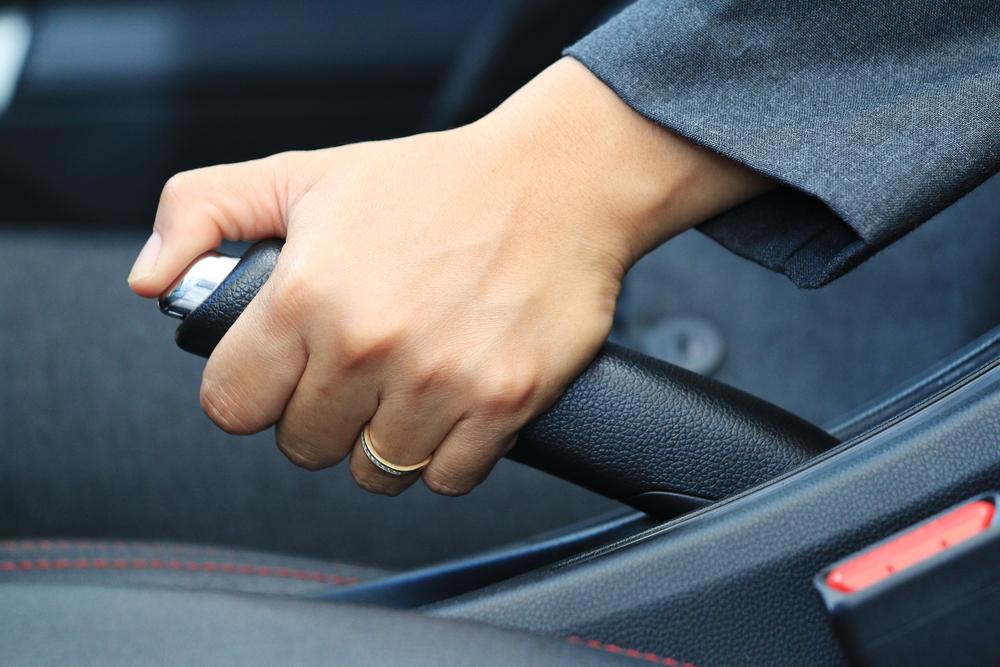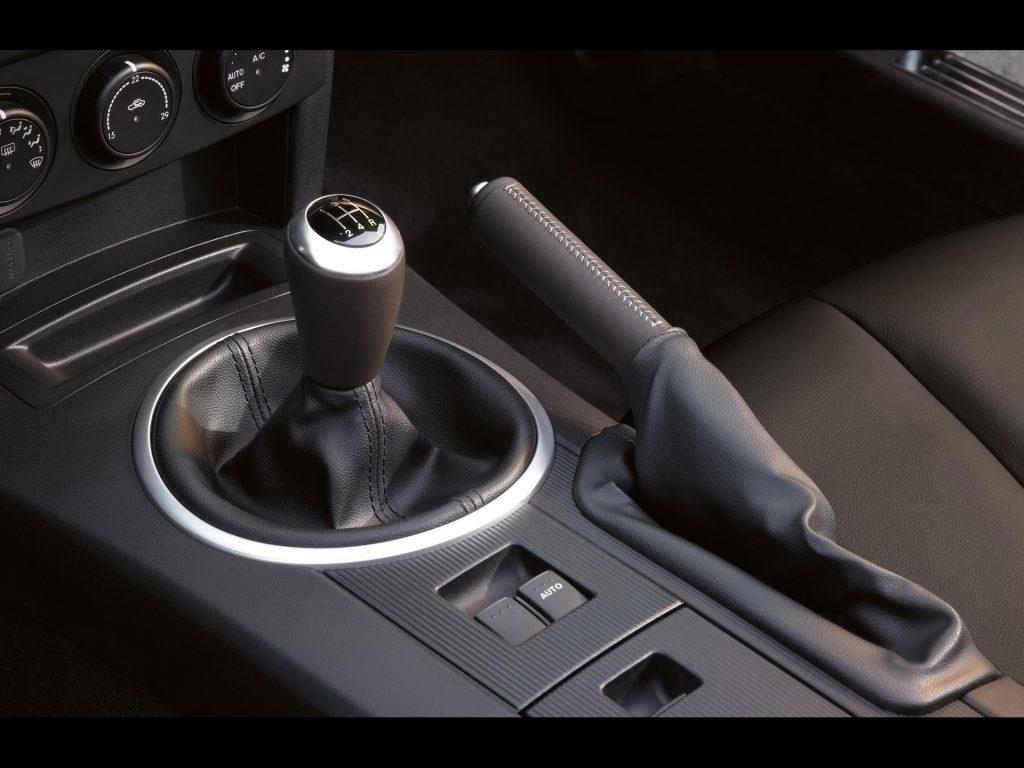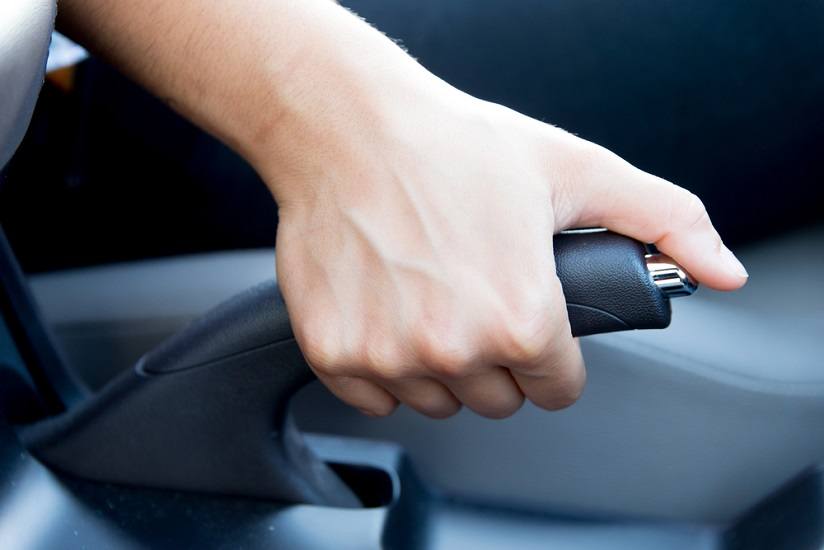How Does Handbrake Work And What Are Its Functions?
There are two braking segments, the front brakes and the handbrake on car. We all know about the functions of the front brakes. But, how does handbrake work and what is handbrake used for?
What Is A Car Handbrake?
Also known as the emergency brake or e-brake, the handbrake is either a foot-operated or a mechanical hand lever. It has a connection to the rear wheels through a metallic cable.
People often mistakenly think that it is connected to the power terrain by the hydraulic means of power transmission. It makes sense because the handbrake will keep the vehicle standstill in the event of a hydraulic brake failure.
You will see the handbrake in between the two front seats or to the left side of the gas and brake pedal. It can aptly be described as a backup braking system that steps in when the primary brakes don’t work.

SEE MORE :
How Does Handbrake Work?
The car handbrake is designed to bypass the hydraulic braking system in the event of a failure.
When you apply the emergency brake, the metallic cable it is connected to passes through an intermediate lever, enhancing the power of the pulling. Then, comes an equalizer that splits that power evenly between the brakes.
In most vehicles, the disc or drum brakes have a connection to a mechanical lever. If it is the disc brake, the existing caliper piston is likely to have a connection to an additional lever and corkscrew.
When you pull the brake on, the lever makes the corkscrew force against the piston. If it is a drum brake, the metallic cable has a direct attachment to the lever on the brake shoes.
So, you know how handbrake works and its importance in the event of a hydraulic brake failure. But, don’t apply it when the foot brake is still operational. It will disrupt the brake’s balance and the vehicle may lose control.
The Functions Of A Handbrake
You already know how does handbrake work but what are their functions, exactly? Can you use it as an alternative to the primary hydraulic brake? Or, its use will give you some kind of extra benefits?

>> More Japanese used car types are here, click for more information <<
Well, the handbrake keeps the car in place when the footbrake malfunctions or fails. But, its primary function is to remain engaged in the parking mode until the driver pushes the release button.
It is quite helpful since it stops a car from rolling away when parked on a slope or an uneven surface.
You probably don’t have to use the handbrake except for parking because the brake system in modern vehicles is highly reliable.
Their mechanism includes both dual-circuit hydraulics and low-brake-fluid sensor systems, which means they are rarely going to become inoperable. There will be very few emergencies when you have to use the car hand brake.
How To Use Handbrake In Car?
Use the handbrake in an automatic car
After parking
- Step 1: Completely stop the vehicle.
- Step 2: Apply the brakes and place the gear lever in the “Park” position.
- Step 3: Pull the lever by pushing the button at the end of it. Pull the lever until it feels tight and then release it.
- Step 5: Verify the parking brake light on the dashboard to see if you have applied the handbrake.
- Step 6: Let off of the brakes.
Once you’re prepared to drive
- Step 1: Apply the brakes.
- Step 2: Put “Drive” mode on the gear selection lever.
- Step 3: Lift the parking brake lever just a little bit, then depress the button at the end of the lever.
- Step 4: Fully depress the lever and let go of the button.
- Step 5: Verify that you have released the handbrake by looking at the dashboard if the parking brake light has vanished.
- Step 6: Let off of the brake and apply the accelerator to begin moving.
Note: To activate the handbrake on an electronic parking brake, push or pull the button. In a similar manner, depress the button to release the parking brake.

How does a manual car’s handbrake work?
After parking
- You can put the car in neutral and apply the handbrake if you have parked it on a level surface.
- Put the car in first gear and pull the lever to activate the handbrake if you want to park it on an incline.
- Pull the handbrake lever and shift into reverse if you want to park your car on a slope.
Once you’re prepared to drive
Release the handbrake while applying the brakes. Drive off while engaging the clutch and shifting to first gear.
You can use the handbrake to prevent the automobile from rolling backwards if you park it on a slope. Switch to first gear by depressing the clutch pedal.
When you have reached your ideal RPM, open the throttle. Once you feel the bite, release the clutch gradually. When the handbrake is released, the car will start to move.
FAQs on Handbrake In Car
-
Can I park my car without a handbrake?
In practice, parking an automobile without applying the parking brake is possible. However, it is unsafe to do so since, depending on the surface you have parked the car on, the automobile may roll forward or backward.
Therefore, whenever you park the car, it is preferable to apply the handbrake.
-
What happens if I operate my handbrake while driving?
The rear brakes may become completely inoperable if you drive the vehicle with the parking brake applied.
Get your car’s rear brakes examined right away if you accidentally leave the handbrake on while driving; doing so might seriously harm the brake shoes, pads, and rotors/drums.
-
What is the difference between a parking brake and a handbrake?
If you know how does a parking brake work, you may realize the parking brake and handbrake are quite identical; there is no distinction.
While some automakers prefer to call it a handbrake, others prefer the term “parking brake.” Both systems are ultimately identical and do the same task.
Check out this video from Engineering Explained to learn more about a handbrake button myth!
-
Can I use the handbrake if my car’s main brakes fail?
If your car’s primary brakes completely fail, you may absolutely utilize the parking brake as an emergency brake. However, you should use caution before doing this technique.
Since the handbrake engages the rear brakes, you run the risk of locking up the back wheels and having an uncontrollable spin. As a result, apply the handbrake carefully and only as a last option if the brakes fail.
-
How do I release the hand brake in the car?
When you want to release the handbrake, you must fully depress the lever’s button by pressing it. You must depress the button or press the handbrake button to activate an electronic parking brake on your automobile.
You may look at the dashboard to make sure the handbrake is off. The parking brake has been effectively released if you don’t see the handbrake light.
Wrapping Up
Handbrakes are indispensable components of a car. However, people often consider it just a tool for stopping wheels.
We hope this article could help you understand how does handbrake work and their functions in the right way. If you have any questions, please do not hesitate to leave a comment below.














